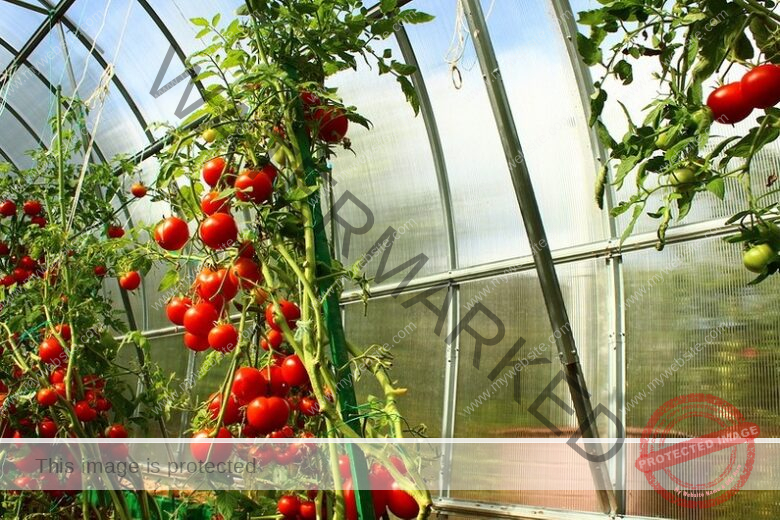One method of cultivating plants that has been gaining popularity in South Africa is companion planting. Companion planting involves planting two or more different crops in the same area to provide beneficial effects to each other.
This method has been used by traditional farmers in South Africa for centuries and is now gaining more attention as it has been proven to increase crop yields and reduce pest infestations.
By combining certain plants, farmers can increase the fertility of the soil, reduce pest pressure, and allow for better water and nutrient utilization. By understanding the principles of companion planting, farmers in South Africa can maximize the potential of their crops.
Companions Planting For Plant Cultivation In South Africa [Different Common Plants Companions]
Companion planting is a system of cultivating plants near one another that can improve soil fertility and pest control. This type of plant cultivation takes advantage of the natural relationships that develop between different species of plants and the beneficial insects, animals, and microorganisms that live in the soil. Companion planting can be used to increase crop yields, attract beneficial insects, and deter pests and diseases.
What are the types of companion planting
Companion planting is typically categorized by the type of benefit it provides. These benefits include pest control, soil improvement, pollination, and nutrient cycling.
Pest Control
Certain plants can act as a natural deterrent to certain pests. For example, marigolds are known to repel certain types of nematodes, while garlic and onions are known to repel certain types of insects. Planting these types of plants near susceptible crops can help to reduce pest pressure.
Soil Improvement
Certain plants can improve the soil by adding nitrogen, making it easier for other plants to absorb nutrients. Legumes, such as beans and peas, are known for their ability to fix nitrogen in the soil. This means that they take nitrogen from the air and convert it into a form that other plants can use.
Pollination
Many plants require insects for pollination. By planting certain plants that attract beneficial insects, such as bees and butterflies, you can increase the amount of pollination in your garden.
Nutrient Cycling
Certain plants can help to cycle nutrients in the soil. For example, by planting deep-rooted plants, such as comfrey, you can help to bring nutrients from deep within the soil to the surface, where they can be used by other plants.
Companion Planting Technique
#1. Intercropping
Growing two or more crops together in the same area to take advantage of different growth habits and nutrient requirements.
#2. Interplanting
Planting multiple crops in the same row or bed to increase yields and pest control.
#3. Trap Cropping
Planting a crop that attracts pests away from the main crops.
#4. Alley Cropping
Planting crops in alternating rows increases diversity and nutrient cycling.
#5. Plant Guilds
Planting a variety of species that benefit each other in a mutually beneficial manner.
#6. Cover Cropping:
Planting cover crops to improve soil health, suppress weeds and break pest cycles.
Different Common Plants Companions
- Tomatoes and Basil
- Peas and Carrots
- Corn and Beans
- Marigolds and Potatoes
- Cucumbers and Radishes
- Peppers and Onions
- Eggplant and Garlic
- Strawberries and Spinach
- Lettuce and Cabbage
- Broccoli and Cauliflower
- Thyme and Sage
- Lavender and Oregano
- Mint and Marjoram
- Nasturtiums and Zucchini
- Parsley and Rosemary
- Dill and Sunflowers
- Beets and Radicchio
- Asparagus and Chives
- Coriander and Squash
- Mustard and Fennel
- Marigold and Tomato
- Sunflower and Pumpkin
- Nasturtium and Bean
- Basil and Pepper
- Lettuce and Carrot
- Radish and Peas
- Dill and Cucumber
- Sage and Cabbage
- Thyme and Eggplant
- Rosemary and Onion
Tips for Companion Planting
- Choose companion plants that are compatible with each other. Some plants may have beneficial relationships while others may be harmful or compete for resources. Research the plants you want to plant together to make sure they are compatible.
- Plant in groups rather than rows. This will help to create a microclimate and provide better protection for your plants.
- Use companion plants that have different growth habits. This will help to create a more balanced ecosystem and reduce competition between plants.
- Create a layered garden. It is best to plant taller plants in the back and shorter plants in the front. This will help to provide protection and shade for the plants in the back.
- Plant a variety of plants. This will help to attract beneficial insects and create a more diverse ecosystem.
- Experiment and have fun! Companion planting is an art, so don’t be afraid to try different combinations and see what works best for you.
Benefits of Companion Planting
#1. Improved Health Of Plants
When grown together, companion plants can provide shade, protection, and nutrients for each other. This helps to create a better environment for the plants to thrive.
#2. Improved Soil Health
Companion plants can help to create better soil conditions by increasing organic matter, aeration, and drainage. This helps to make the soil more fertile and able to support more plant life.
#3. Pest Control
Certain plants can act as natural pest repellents, helping to keep unwanted insects away from your crops.
#4. Attract Beneficial Insects
Certain plants can attract beneficial insects such as bees, ladybugs, and parasitic wasps. These insects can help to keep pests away and pollinate your crops.
#5. Increased Yield
Companion plants can help to improve the yield of your crops by providing additional nutrients and protection.
The drawback of Companion Planting
One of the main drawbacks of companion planting is that it can be difficult to find the right companion plant for a particular crop. This can be especially challenging for beginner gardeners who may not have the knowledge or experience to identify the right combination of companion plants.
Companion planting can take up more space in the garden, as multiple plants are needed for any given crop. This may not be feasible for small gardens or areas with limited space. Finally, companion planting can increase the risk of diseases and pests, as multiple plants can bring in more pests that could potentially damage the crops.
List Of Companion Plants
#1. Catmint (Nepeta)
This aromatic herb grows well in full sun and is attractive to bees and other pollinators.
#2. Salvia
This fragrant perennial grows well in full sun and is attractive to hummingbirds.
#3. Foxglove (Digitalis)
This tall, upright flower grows best in partial shade and provides nectar for hummingbirds.
#4. Coreopsis
This daisy-like flower grows best in full sun and provides nectar for bees and other pollinators.
#5. Lavender (Lavandula)
This fragrant herb grows best in full sun and is attractive to both bees and butterflies.
#6. Yarrow (Achillea)
This low-growing flower grows best in full sun and is attractive to butterflies.
#7. Sedum
This succulent ground cover grows best in full sun and is attractive to bees.
#8. Ornamental Grasses
These low-maintenance plants grow best in full sun and provide a unique texture to any garden.
#9. Daylily (Hemerocallis)
This colorful flower grows best in full sun and is attractive to bees.
#10. Hellebore (Helleborus)
This evergreen perennial grows best in partial shade and is attractive to butterflies.
Companion Plants For Beetroot
- Lettuce
- Potatoes
- Radishes
- Carrots
- Onions
- Garlic
- Spinach
- Swiss Chard
- Cucumbers
- Nasturtiums
Onion Companion Plants
Garlic is a great companion plant for onions. Other companion plants that work well with onions include parsley, marigolds, chamomile, carrots, rosemary, and sage.
Companion Planting Chart Pdf
This companion planting chart PDF is a great resource for gardeners who want to learn more about how different plants interact with each other. It outlines the benefits of pairing certain plants together and provides helpful tips on how to get the most out of your garden. Whether you’re a beginner or an experienced gardener, this chart can help you maximize the output of your garden.
Companion Planting Chart For Vegetables
- Tomato: Basil, chives, garlic, onions, parsley
- Pepper: Basil, chives, garlic, onions, parsley
- Eggplant: Basil, chives, garlic, marigold, mint, nasturtium, oregano
- Cucumber: Beans, dill, garlic, lettuce, marigold, nasturtium, radishes
- Beans: Beets, carrots, corn, cucumbers, potatoes, sunflowers
- Carrots: Beans, chives, lettuce, onions, radishes, tomatoes
- Lettuce: Beets, carrots, onions, radishes, strawberries
- Potatoes: Beans, corn, marigolds, peas
- Onions: Beets, carrots, chamomile, lettuce, tomatoes
Companion Planting Garden Layout
- Tomatoes: Marigolds, Basil, Garlic, Onions, Nasturtiums, Carrots
- Peppers: Basil, Marigolds, Parsley, Carrots, Beans
- Carrots: Onions, Radishes, Peas, Lettuce
- Beans: Corn, Radishes, Cucumbers, Potatoes
- Lettuce: Radishes, Onions, Carrots, Beets
- Basil: Tomatoes, Peppers, Asparagus
- Garlic: Tomatoes, Peas, Lettuce
- Onions: Tomatoes, Carrots, Beets
- Marigolds: Tomatoes, Peppers
- Nasturtiums: Tomatoes
- Radishes: Lettuce, Carrots, Beans
- Peas: Garlic, Beans, Potatoes
- Corn: Beans, Potatoes, Cucumbers
- Potatoes: Peas, Beans, Corn
- Cucumbers: Beans, Corn
- Beets: Onions, Lettuce
- Asparagus: Basil
Companion Planting Chart For Fruit
- Garlic: helps to repel pests and improve the health of the tree.
- Coriander: attracts beneficial insects, such as bees, to the tree.
- Peas: provides nitrogen to the soil and helps to improve the soil around the tree.
- Nasturtiums: attracts beneficial insects, such as ladybugs and aphid predators.
- Marigolds: repel harmful insects, such as aphids, from the tree.
- Lavender: repels harmful insects, such as codling moths, from the tree.
- Chives help to repel pests and diseases from the tree.
- Mint: attracts beneficial insects, such as honeybees.
- Fennel: attracts beneficial insects, such as wasps, to the tree.
- Borage: attracts beneficial insects, such as bees, to the tree.
- Lemon Balm helps to repel pests and improve the health of the tree.
Companion Planting Chart For Flowers
- Alyssum: Nasturtium, Petunia, Marigold
- Begonia: Geranium, Coleus, Impatiens
- Carnation: Sweet Pea, Sage, Marigold
- Dahlia: Sage, Marigold, Aster
- Echinacea: Yarrow, Monarda, Aster
- Freesia: Geranium, Coleus, Impatiens
- Gladiolus: Nasturtium, Petunia, Marigold
- Hibiscus: Petunia, Marigold, Sage
- Impatiens: Geranium, Coleus, Petunia
- Lilac: Sage, Marigold, Aster
- Marigold: Alyssum, Carnation, Gladiolus
- Nasturtium: Alyssum, Gladiolus, Petunia
- Petunia: Alyssum, Nasturtium, Impatiens
- Sage: Carnation, Dahlia, Lilac
- Sweet Pea: Carnation, Geranium, Coleus
- Yarrow: Echinacea, Monarda, Aster
Conclusion
Companion planting is a great way to create a healthier and more productive garden. With the right combination of plants, you can create a balanced ecosystem that will help to improve the health of your plants and soil. With a bit of experimentation and research, you can create the perfect companion




